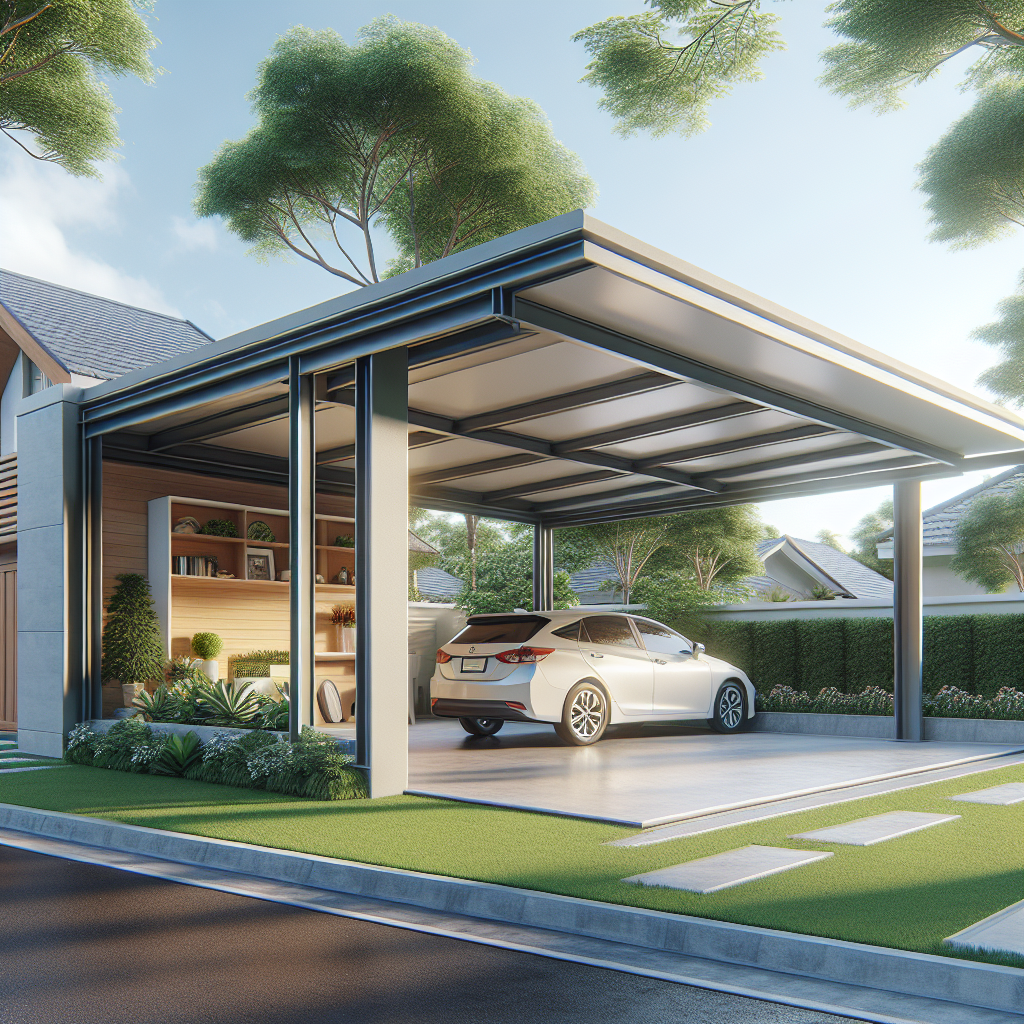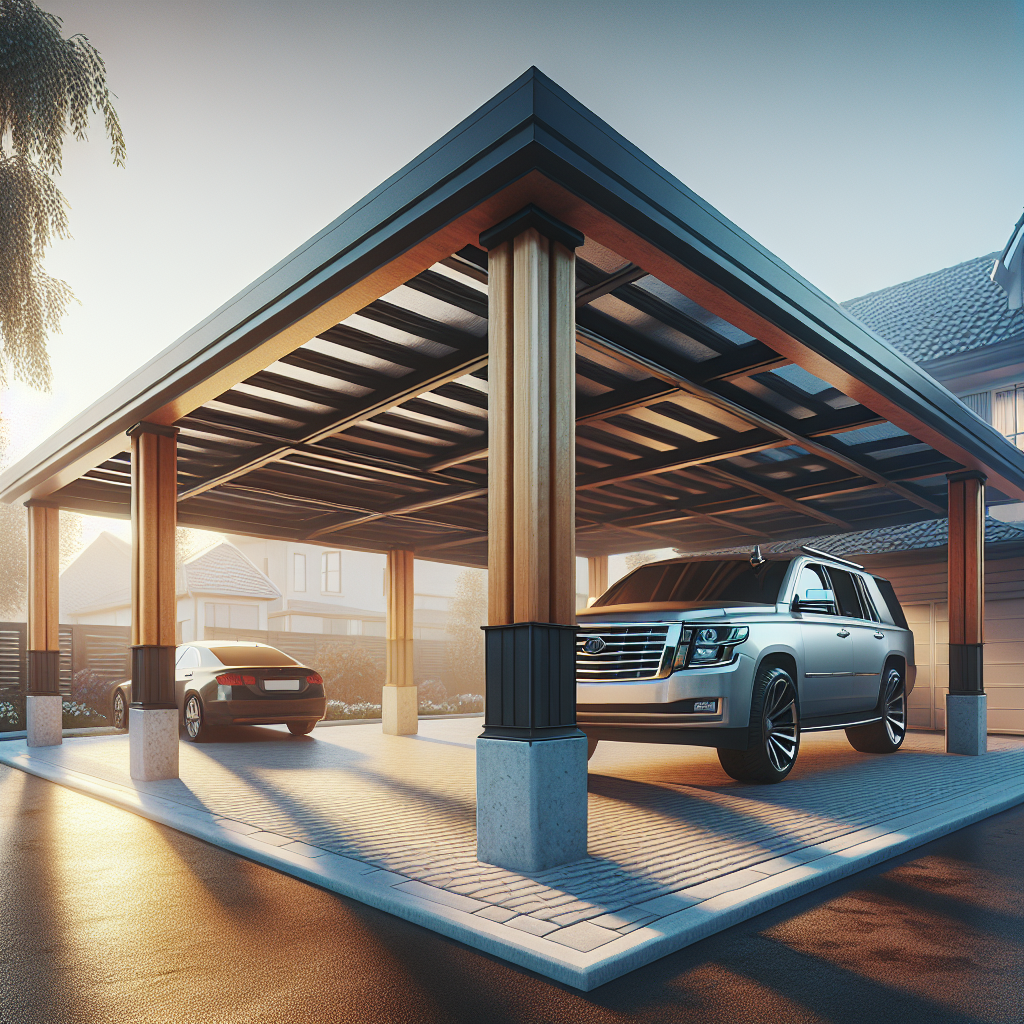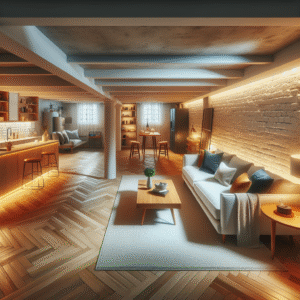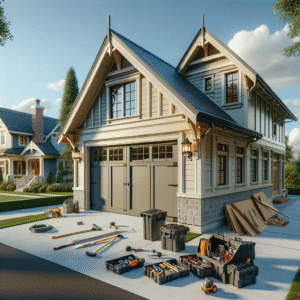Introduction to Building a Durable Carport: Essential Considerations
When it comes to enhancing your home’s functionality and value, adding a carport is a smart choice. Not only does it protect your vehicle from the harsh elements, but a well-built carport can also serve as a versatile space for storage or outdoor activities. In this blog post, we’ll dive into the essential considerations you need to keep in mind to construct a durable, efficient carport that stands the test of time. From selecting the right materials to understanding the structural necessities, BuildNet is here to guide you through every step of the process.
Step-by-Step Guide to Constructing a Strong Carport
Building a carport requires careful planning and execution. Below, we outline a comprehensive, easy-to-follow guide to help you construct a carport that not only meets your needs but exceeds your expectations:
- Site Selection: Choose a flat, accessible area that complies with local building codes.
- Design Planning: Decide on the dimensions and type of carport that best fits your property and vehicle dimensions.
- Permit Acquisition: Ensure you obtain all necessary permits from your local authorities to avoid legal issues.
- Material Procurement: Gather high-quality materials that offer durability and weather resistance (more on this next).
- Foundation Setup: Lay a solid foundation to support the structure securely.
- Frame Construction: Erect the frame according to your design plans, ensuring all connections are secure.
- Roof Installation: Attach the roofing material, making sure it provides adequate coverage and protection.
- Finishing Touches: Apply finishes and treatments to enhance durability and aesthetics.
Choosing the Right Materials for Longevity and Weather Resistance
Selecting the appropriate materials is crucial for building a carport that lasts. You’ll need to consider factors such as climate, maintenance requirements, and budget. Materials like galvanized steel, polycarbonate, and treated wood are popular choices due to their durability and resistance to elements. We’ll explore these options in detail to help you make an informed decision that aligns with your specific needs.

If you’re ready to take your home improvement or construction project to the next level, we can help! Find trusted contractors on BuildNet, whether you’re looking for renovations, new builds, electrical work, plumbing, or anything in between. Our directory connects you with qualified professionals who can make your vision a reality.
Introduction to Building a Durable Carport: Essential Considerations
Welcome, DIY enthusiasts and novice builders alike! If you’re planning to add a carport to your property, you’ve embarked on a practical project that not only enhances the value of your home but also protects your vehicle from the elements. However, the key to a successful carport project lies in its durability and the ability to withstand various weather conditions. Let’s dive into the essential considerations that will help ensure your carport is built to last.
Understanding the Purpose of Your Carport
First and foremost, it’s important to clarify why you’re building a carport. Is it to shield your car from snow and rain? Or are you looking to create a multipurpose space, perhaps for outdoor gatherings or as an additional storage area? Knowing the primary purpose of your carport will influence many of your decisions down the line, from materials to design specifics.
Site Selection – Location, Location, Location!
Choosing the right spot for your carport is crucial. You’ll want a location that is easily accessible yet doesn’t interfere with the landscaping or flow of your property. Consider proximity to your home for easy access, especially during inclement weather. Also, think about the direction your carport faces; positioning it to avoid the brunt of weather extremities can naturally extend its lifespan.
Obtain Necessary Permits
Before any construction begins, it’s vital to check with your local building authorities regarding permits. Building without a permit can lead to fines and even required removal of your structure. Each locality has different regulations based on size, location, and type of structure, so a quick call or visit to your local permitting office can save you a lot of headaches later on.
Consider the Climate
Your local climate plays a significant role in the design and materials of your carport. Heavy snowfall, high winds, and extreme temperatures all dictate the need for sturdier materials and specific structural adaptations. For example, in areas receiving heavy snow, a pitched roof may be preferable to a flat one to prevent snow accumulation, which could weigh down and damage the structure.
Design for Durability and Aesthetics
The design of your carport should complement the overall aesthetic of your home while being functional. It’s not just about creating a shelter but also about enhancing the visual appeal of your property. Consider the architectural style of your home and try to match it with your carport. This not only increases curb appeal but may also boost the property value.
Future-Proofing Your Carport
Thinking long-term can save you money and effort. For instance, if you might need an electric vehicle in the future, consider installing an electrical setup during the initial construction phase. Additionally, think about the potential of converting your carport into a garage or adding walls in the future. Planning for such possibilities now can make any transitions smoother and less costly.
In conclusion, building a durable carport involves careful consideration of several key factors. From the location and materials to design and local regulations, each aspect plays a pivotal role in the structure’s longevity and functionality. By taking the time to plan thoroughly, you’re on your way to constructing a carport that not only meets your current needs but also adapts to future requirements.

Step-by-Step Guide to Constructing a Strong Carport
Hey there, DIY enthusiast! Are you ready to embark on a project that not only boosts the value of your home but also provides a sturdy shelter for your vehicle? Building a carport can be a rewarding project if done right. Whether you’re in sunny California or snowy Maine, following this comprehensive guide will help you construct a carport that stands the test of time and weather. Let’s roll up our sleeves and get started!
Step 1: Planning and Permits
Before you grab your hammer, planning is crucial. First, check with your local building authority to find out if you need a permit to build a carport on your property. This varies by location, so a quick call or visit to your city hall will set you on the right path. Remember, adhering to local building codes isn’t just a legal requirement; it ensures your carport is built safely and soundly.
Step 2: Choosing the Location
Location is everything! When scouting for the perfect spot, consider accessibility, sun exposure, and how it might affect your home’s overall aesthetics. You’ll want a level area that’s easy to access for your vehicle. Additionally, think about future uses—perhaps you’ll want to use it as a workspace or a spot for outdoor gatherings.
Step 3: Laying the Foundation
A solid foundation is key to any lasting structure. For a carport, you have a few options:
- Concrete slab: Ideal for all types of vehicles. It’s durable and provides a level surface.
- Gravel: An economical option that offers good drainage but may require more maintenance.
- Paving stones: A visually appealing choice that can complement your home’s exterior.
Make sure the foundation is properly leveled and compact. This will prevent structural issues down the line.
Step 4: Setting the Posts
The posts are the main support for your carport, so you want to ensure they are set correctly. Here’s how to do it:
- Dig holes at each corner of the designated carport area. The depth of the holes should be about one-third the height of your posts, typically around 24-36 inches deep.
- Place the posts in the holes. Use a level to make sure they’re straight.
- Pour concrete around the posts and allow it to set for at least 24 hours. This will anchor them securely in place.
Step 5: Constructing the Frame
With your posts set, it’s time to construct the frame. Attach horizontal beams along the top of your posts to create a basic outline of the carport. Then, add rafters across the top beams for additional support. Ensure all connections are securely fastened with either nails or screws, depending on the load they need to bear and the advice from your local hardware store expert.
Step 6: Roof Installation
Your carport’s roof is its first line of defense against the elements, so choosing the right materials is crucial (more on this in other sections of our guide). Here’s how to install it:
- Start by laying a roofing underlayment if you’re using shingles. This provides an extra layer of protection from moisture.
- Install your roofing material of choice. Metal panels are popular for carports as they are durable, lightweight, and relatively easy to install.
- Secure the panels or shingles to the rafters, ensuring that each piece overlaps properly to prevent leaks.
Step 7: Finishing Touches
Almost there! Now it’s time for the finishing touches. Consider the following:
- Paint or stain: Protect and beautify your carport’s wooden parts by painting or staining them. Choose a color that matches or complements your home exterior.
- Gutters and downspouts: Install gutters along the edges of the roof to direct rainwater away from the foundation. This is especially important if you have a concrete base.
- Trim: Adding trim around the carport can give it a polished look and help it blend more seamlessly with your home’s design.
And there you have it! Step-by-step, you’ve built a strong, durable carport that not only serves a practical purpose but also enhances the look and functionality of your property. Remember, taking your time to do things right the first time will save you headaches down the road. Happy building!
Choosing the Right Materials for Longevity and Weather Resistance
Hey there! If you’re planning to build a carport, picking the right materials isn’t just a matter of aesthetics; it’s about ensuring durability and weather resistance too. Whether you’re in sunny California, snowy Colorado, or rainy New York, the materials you choose must stand up to your local climate. So, let’s dive into the world of materials that will make your carport not only stand strong but also look great for years to come!
Durable Framing Options
Wood: A classic choice! Wood is versatile and offers a natural aesthetic that many homeowners love. For those living in drier climates, wood can be a fantastic choice. However, if you opt for wood, make sure to treat it with weather-resistant sealants and regularly maintain it to prevent rot and insect damage. Cedar and redwood are particularly known for their durability and resistance to weathering.
Metal: If you’re looking for something that really lasts, metal frames, particularly those made of aluminum or steel, are your best bets. Steel carports are incredibly sturdy and offer high resistance against wind and snow. Aluminum, on the other hand, won’t rust and is lighter, making it easier to install. Both options provide excellent protection and minimal maintenance requirements.
Top Choices for Roofing Materials
The roof of your carport has to endure everything from blazing sun to heavy snowfall, so choosing the right material here is crucial for the longevity of your structure.
Metal Roofing: Metal roofs are incredibly popular for carports due to their durability and ability to withstand severe weather. They come in various styles and colors, can reflect solar radiant heat, which helps keep spaces cooler, and are effective in shedding rain and snow quickly.
Polycarbonate Panels: If you want something that lets light in but keeps the elements out, polycarbonate roofing might be the way to go. These panels are virtually unbreakable, provide UV protection, and are available in different tints. They’re ideal for carports in areas that experience a mix of sun and rain.
Considering Siding and Additional Elements
While not all carports have sides, adding them can provide extra protection against the elements, enhance security, and increase the overall value of the structure. Here are a couple of materials to consider if you decide to add siding:
Vinyl Siding: Vinyl is a cost-effective option that comes in a variety of colors and requires little maintenance. It doesn’t fade, crack, or rot, making it a practical choice for many homeowners.
Fiber Cement Siding: This material offers the appearance of wood, stucco, or masonry but is more durable and weather-resistant. Fiber cement siding is excellent for areas that experience extreme weather conditions, as it can withstand temperature changes and humidity without deteriorating.
Don’t Forget the Foundations
The foundation of your carport will influence its longevity and stability. Here are the primary types to consider:
Concrete: A concrete slab is perhaps the most popular and durable option for a carport foundation. It provides a stable and level base, ensuring that the carport structure remains secure and undamaged by moisture or shifts in the soil.
Asphalt: For a more budget-friendly option, asphalt can work well, especially in colder climates where frost heave can be a problem. It’s slightly less durable than concrete but can still provide a solid foundation for lighter carport structures.
Final Tips on Selection
When selecting materials for your carport, consider the following tips to ensure you make choices that fit your needs and environment:
- Assess your local climate: Weather patterns should influence your material choices significantly.
- Think about longevity: Investing in higher quality materials might seem expensive upfront but can save money in the long run on repairs and replacements.
- Check local building codes: Make sure the materials you choose comply with local regulations and building codes.
- Consider aesthetic harmony: Choose materials that complement your home’s existing design and color scheme to enhance overall curb appeal.
The right materials can make all the difference in building a durable, weather-resistant, and aesthetically pleasing carport. By considering your local climate and weighing the benefits of each material against your specific needs, you can ensure that your carport will serve you well for many years to come. Happy building!

Frequently Asked Questions About Building a Carport
What are the essential considerations when planning to build a carport?
When planning to build a carport, consider the following key factors: location, size, local building codes, material choice, and whether you need a freestanding structure or one attached to your home. It’s also important to think about the purpose of the carport (e.g., for car protection or as additional storage) and the types of weather conditions it needs to withstand.
How do I choose the right location for my carport?
Choosing the right location involves considering convenience, safety, and exposure to elements. Place your carport in a spot that is easily accessible but also offers protection from prevailing winds and excessive sunlight. Ensure it does not obstruct your property’s traffic flow or violate any local zoning laws.
What materials are best for building a durable and weather-resistant carport?
The most durable materials for a carport include galvanized steel, aluminum, and pressure-treated wood. These materials offer longevity and are capable of withstanding harsh weather conditions. Additionally, consider roofing materials that provide UV protection and are hail-resistant.
Can I build a carport myself, or should I hire a professional?
Building a carport can be a DIY project if you have some basic construction skills and the right tools. However, for ensuring structural integrity and compliance with local building codes, it’s advisable to hire a professional. Professionals can also help in handling more complex designs or customized builds.
What are the typical dimensions for a carport?
Typical dimensions for a single carport are about 12 feet wide by 20 feet long. For a double carport, aim for at least 20 feet wide. Ensure the height accommodates larger vehicles if necessary, with a minimum of 7 feet clearance.
How long does it take to build a carport?
The construction time for a carport can vary based on its complexity and size. A simple, prefabricated kit might take a weekend to assemble, whereas a custom design could take several weeks. Always allow extra time for obtaining permits and inspections if required.
Do I need a permit to build a carport?
Many areas require a permit for building a carport, especially if it involves certain dimensions or electrical installations. Check with your local building authority to understand the necessary permits and regulations before you start your project.
How can I ensure my carport is environmentally friendly?
To build an environmentally friendly carport, choose sustainable materials such as recycled steel or certified wood. Consider incorporating a green roof or solar panels to reduce environmental impact and possibly gain energy benefits.
What maintenance is required for a carport?
Maintenance requirements depend on the materials used. Generally, inspect your carport regularly for rust, damage, and debris. Wooden carports may need periodic staining or sealing, while metal carports might require rust protection and repainting after some years.
How can I customize my carport to better match my home’s aesthetics?
To enhance aesthetic coherence, choose materials and colors that complement your home’s exterior. Consider design elements like trim, roofing style, and decorative posts that align with your home’s architectural style. Custom lighting and siding can also add a touch of elegance and functional value.
In Conclusion
Building a carport is a fantastic way to protect your vehicle from the elements and add value to your property. Whether you’re a DIY enthusiast ready to take on a new project or someone who prefers the expertise of a professional, it’s important to consider all aspects meticulously. From selecting the right materials to understanding local building codes, each step is crucial in creating a durable and functional carport. If you feel overwhelmed or unsure where to start, why not contact a contractor on the BuildNet website for a free quote? Our directory of seasoned professionals is ready to help you turn your carport dreams into reality. Remember, a well-planned carport is not just a practical addition but an investment in your property. Happy building!







